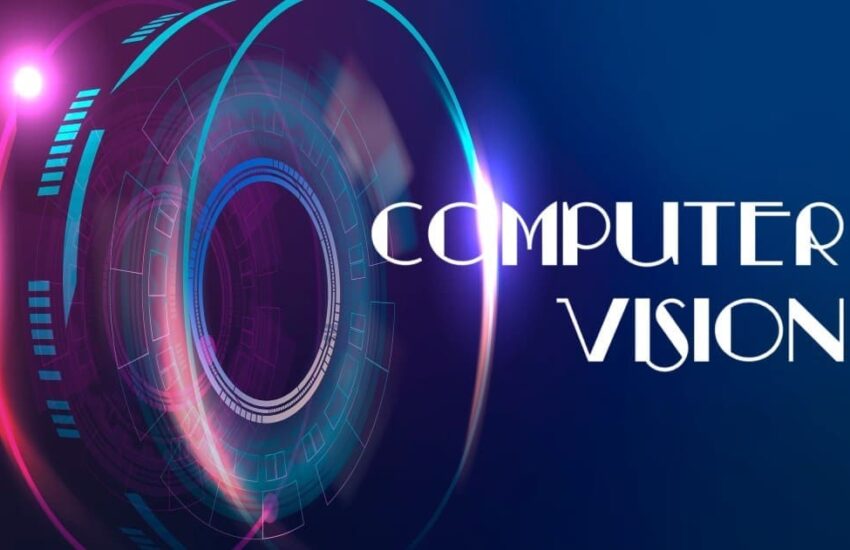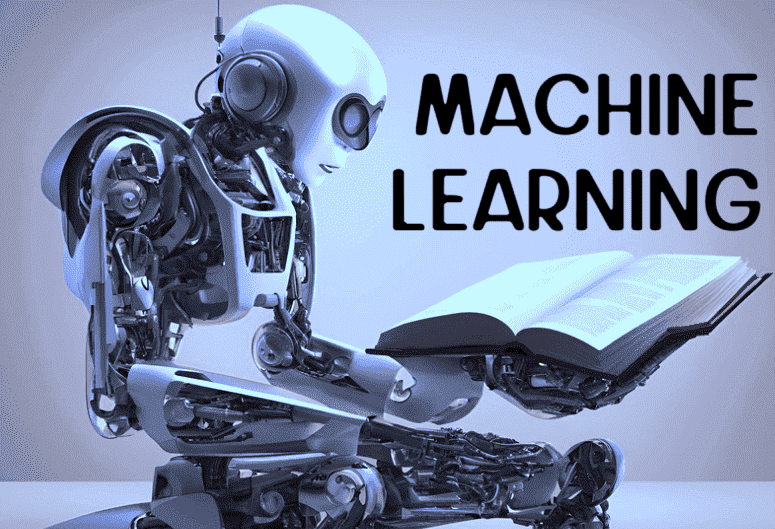
Overview:
Web3 is poised to usher in a new era of the internet, characterized by decentralization, transparency, and enhanced user control. This paradigm shift builds upon blockchain technology to redefine how we interact online, moving away from centralized authority and towards peer-to-peer networks. So, what is Web3, at core, it encompasses a diverse array of innovations—from decentralized finance (DeFi) and non-fungible tokens (NFTs) to advanced privacy solutions and self-governing DAOs—that aim to empower individuals, foster innovation, and reshape digital ecosystems.
In this article, we delve into the key trends and developments shaping the future of Web3. We explore the challenges and benefits of this emerging landscape, highlight its applications across industries such as finance, healthcare, and social networking, and discuss its futuristic outlook. From scalability solutions and interoperability advancements to regulatory considerations and sustainability efforts, Web3 is set to redefine internet infrastructure, offering a decentralized, secure, and inclusive environment for global digital interactions.
Contents:
- What is Web3 (Web 3.0)
- Key components of Web3 (Web 3.0)
- Key application areas of Web3 (Web 3.0)
- Key benefits of Web3 (Web 3.0)
- Key challenges of Web3 (Web 3.0)
- Future Trends and Developments in Web3 (Web 3.0)
- Futuristic Outlook for Web3 (Web 3.0)
- Summing Up
So, what is Web3 (Web 3.0):
Web3, also known as Web 3.0, represents the next generation of the internet, focusing on decentralization, user empowerment, and enhanced interactivity. It aims to create a more secure, decentralized, and user-centric web experience. To understand Web3 better, let’s also look at its predecessors:
Web1 (Static Web):
In the early days of the internet, often referred to as Web1 or the Static Web, websites were quite basic. They consisted mainly of static pages that didn’t change much unless manually updated by the website owner. These pages typically presented information in a one-way manner, similar to reading from a digital book or library.
This static nature meant that users could consume information but didn’t have the ability to interact with it beyond clicking links to navigate between pages. Websites were essentially digital brochures or informational pamphlets, lacking the interactive and dynamic features that characterize today’s internet experience. There wasn’t much interaction or dynamic content like we see today with social media feeds, interactive applications, or personalized recommendations.
Web2 (Dynamic Web):
The current version of the internet, often referred to as Web2 or the Dynamic Web, is characterized by highly interactive websites. Unlike the early static web, Web2 allows users not only to consume information but also to actively participate by creating, sharing, and interacting with content.
In this era, social media platforms like Facebook, Twitter, and Instagram enable users to connect, share updates, photos, and videos with friends and followers worldwide. Blogs provide a platform for individuals and organizations to publish articles, opinions, and insights. Online services such as Google’s search engine, Amazon’s e-commerce platform, and streaming services like Netflix have become integral parts of daily life, offering convenience and access to vast amounts of information and entertainment.
However, this dynamic web landscape is dominated by large corporations that collect and control vast amounts of user data. Companies like Facebook, Google, and Amazon leverage this data to personalize services, target advertisements, and influence user behavior.
Overall, Web2 represents a significant shift from passive consumption to active participation, but it also raises concerns about privacy, data ownership, and the concentration of power among a few tech giants.
Web3 (Decentralized Web):
In the next evolution of the internet, known as Web3, blockchain technology plays a central role. Unlike the current Web2 dominated by large corporations, Web3 aims to decentralize control, shifting power from big companies to individual users.
Blockchain, the underlying technology of Web3, enables a distributed and transparent ledger where transactions and data are securely recorded across a network of computers (nodes). This decentralization eliminates the need for intermediaries and allows for peer-to-peer interactions without relying on a central authority.
In Web3, individuals have greater ownership and control over their data, digital assets, and online interactions. This empowerment is facilitated by cryptocurrencies, smart contracts, and decentralized applications (DApps) that operate on blockchain networks. These innovations enable secure and direct transactions, automated agreements (smart contracts), and decentralized applications that function independently of traditional servers.
Key components of Web3 (Web 3.0):
1. Decentralization:
Unlike Web 2.0, which is dominated by centralized platforms and services (e.g., Google, Facebook), Web3 aims to distribute control among users. This is often achieved through blockchain technology and decentralized protocols.
2. Blockchain Technology:
Blockchain is a foundational technology for Web3. It provides a secure, transparent, and immutable ledger for recording transactions. Cryptocurrencies like Bitcoin and Ethereum are built on blockchain, but the technology also supports smart contracts and decentralized applications (dApps).
3. Smart Contracts:
These are self-executing contracts with the terms directly written into code. They automatically enforce and execute the terms of an agreement when predefined conditions are met, reducing the need for intermediaries.
4. Decentralized Applications (dApps):
dApps run on decentralized networks (like Ethereum) rather than centralized servers. They provide various services, from finance (DeFi) to gaming, and are designed to be more transparent and resistant to censorship.
5. User Control and Privacy:
Web3 emphasizes giving users greater control over their data and online identities. This can involve self-sovereign identity systems, where individuals manage their own identities without relying on third parties.
6. Tokenization and Digital Assets:
Web3 enables the creation and exchange of digital assets and tokens. These can represent ownership in a variety of things, from digital art (NFTs) to real-world assets.
7. Interoperability:
Web3 envisions a more connected and interoperable internet, where different platforms and services can work seamlessly together, often facilitated by blockchain protocols.
8. Economic Models and Incentives:
Web3 introduces new economic models where users can be rewarded for their participation and contribution to networks. For example, in decentralized finance (DeFi), users can earn interest by lending their cryptocurrencies.
Key application areas of Web3 (Web 3.0):
1. Finance and Payments:
Decentralized Finance (DeFi): Includes decentralized exchanges (DEXs), lending platforms, and automated market makers (AMMs) for cryptocurrencies.
Cross-Border Payments: Utilizing cryptocurrencies for faster and cheaper international transactions.
Stablecoins: Cryptocurrencies pegged to stable assets like fiat currencies, providing stability in volatile markets.
2. Digital Ownership and Entertainment:
Non-Fungible Tokens (NFTs): Ownership and trading of digital assets such as art, music, virtual real estate, and collectibles.
Gaming: Integration of blockchain for ownership of in-game assets, tokenized economies, and player-driven marketplaces.
3. Supply Chain and Logistics:
Traceability and Transparency: Blockchain for tracking and verifying the origin, authenticity, and movement of goods through supply chains.
Authentication: Proof of authenticity for luxury goods, pharmaceuticals, and other high-value items using blockchain.
4. Social Networking and Content Creation:
Decentralized Social Media: Platforms that empower users with control over their data and content moderation, leveraging blockchain for transparency and censorship resistance.
Content Monetization: Direct monetization of digital content through blockchain-based microtransactions, subscriptions, or token rewards.
5. Identity and Personal Data:
Self-Sovereign Identity: Blockchain-based solutions for individuals to control their digital identities, enhancing privacy and reducing reliance on centralized identity providers.
Secure Data Sharing: Blockchain-enabled secure sharing of medical records, personal data, and credentials with enhanced privacy protections.
6. Governance and Voting:
Decentralized Autonomous Organizations (DAOs): Organizations governed by smart contracts and token holders, enabling decentralized decision-making and funding allocation.
Blockchain Voting: Transparent and secure voting systems for elections, referendums, and organizational governance.
7. Healthcare:
Medical Records Management: Blockchain for secure and interoperable management of patient records, ensuring privacy and data integrity.
Supply Chain Integrity: Tracking pharmaceuticals and medical supplies to combat counterfeit products and ensure authenticity.
8. Energy and Utilities:
Peer-to-Peer Energy Trading: Blockchain-enabled platforms for decentralized energy trading among consumers, producers, and utilities.
Grid Management: Improved transparency and efficiency in energy distribution and grid management through blockchain solutions.
9. Legal and Intellectual Property:
Smart Contracts: Automated execution and enforcement of legal agreements, reducing costs and delays associated with traditional contract management.
IP Rights Management: Blockchain for managing and protecting intellectual property rights, including digital assets and creative works.
Key benefits of Web3 (Web 3.0):
1. Decentralization:
Enhanced User Control: Web3 shifts control away from centralized entities like tech giants towards individual users. Users have greater sovereignty over their data, digital identities, and online interactions.
Reduced Intermediaries: Blockchain technology and decentralized protocols enable direct peer-to-peer interactions, reducing the need for intermediaries in transactions, data management, and content distribution.
2. Security and Trust:
Immutable Data: Information stored on blockchain networks is tamper-proof and resistant to censorship or unauthorized alteration.
Enhanced Transparency: Blockchain’s transparent and auditable nature improves trust by allowing anyone to verify transactions and data integrity.
3. Privacy and Data Ownership:
User-Centric Data Management: Web3 promotes self-sovereign identity solutions where users control their personal data and choose when and how to share it.
Minimized Data Breaches: Decentralized storage and encryption techniques reduce the risk of large-scale data breaches by dispersing data across the network.
4. Innovation and Interoperability:
Diverse Applications: Web3 supports a wide range of decentralized applications (dApps) across industries such as finance, gaming, supply chain, and healthcare.
Cross-Platform Compatibility: Standards and protocols facilitate interoperability between different blockchain networks and applications, fostering a more connected ecosystem.
5. Economic Incentives and Accessibility:
Token Economy: Cryptocurrencies and tokens enable new economic models where users can earn rewards or participate in governance through token ownership.
Financial Inclusion: Web3 technologies like decentralized finance (DeFi) provide financial services to underserved populations, bypassing traditional barriers like geographic location or economic status.
6. Community Governance and Collaboration:
Decentralized Autonomous Organizations (DAOs): DAOs enable decentralized decision-making and governance through transparent voting mechanisms and smart contracts.
Collaborative Innovation: Web3 fosters collaborative ecosystems where developers, creators, and users can contribute to and benefit from decentralized platforms and networks.
7. Resilience and Sustainability:
Network Resilience: Decentralized networks are more resistant to single points of failure and malicious attacks compared to centralized systems.
Environmental Impact: Some Web3 platforms prioritize sustainability by exploring energy-efficient consensus mechanisms and reducing carbon footprints associated with blockchain operations.
Key challenges of Web3 (Web 3.0):
1. Scalability:
Network Throughput: Current blockchain networks like Ethereum face limitations in processing transactions quickly and efficiently, leading to congestion and high fees during peak times.
Scaling Solutions: Implementing effective layer 2 solutions, sharding, and other scalability upgrades is crucial to support mass adoption and handle increased transaction volumes.
2. Usability and User Experience:
Complexity: Interacting with blockchain-based applications often requires technical knowledge, such as handling private keys, managing gas fees, and understanding wallet security.
Onboarding New Users: Simplifying user interfaces, improving educational resources, and enhancing overall usability are essential to attract and retain mainstream users.
3. Regulatory Uncertainty:
Compliance: Web3 technologies challenge traditional regulatory frameworks, particularly regarding financial transactions, data privacy, and digital asset ownership.
Legal Clarity: Clear and consistent regulations are needed to foster innovation while protecting users and maintaining market integrity.
4. Security Risks:
Smart Contract Vulnerabilities: Bugs or vulnerabilities in smart contracts can lead to financial losses or exploitation of decentralized applications.
Phishing and Hacking: Malicious actors target users and platforms to steal cryptocurrencies, manipulate markets, or disrupt operations.
5. Interoperability and Standards:
Fragmentation: Different blockchain platforms and protocols lack interoperability, hindering seamless communication and collaboration between decentralized applications.
Standardization: Establishing common standards for tokens, protocols, and data formats is essential for interoperability and ecosystem growth.
6. Environmental Impact:
Energy Consumption: Proof-of-Work (PoW) consensus mechanisms used by some blockchains consume significant energy, raising concerns about sustainability and environmental impact.
Transition to Greener Solutions: Exploring and adopting more energy-efficient consensus mechanisms, like Proof-of-Stake (PoS), is critical to mitigate environmental concerns.
7. Adoption and Education:
Awareness and Understanding: Many potential users and stakeholders have limited knowledge of blockchain technology, its benefits, and how to safely participate.
Educational Efforts: Increasing educational initiatives and outreach programs can help demystify Web3, build trust, and encourage broader adoption.
8. Governance and Accountability:
Decentralized Governance: Ensuring effective governance structures in DAOs and decentralized protocols to manage disputes, updates, and community engagement.
Transparency: Maintaining transparency in decision-making processes and governance mechanisms to build trust and mitigate governance risks.
Future Trends and Developments in Web3:
1. Scalability Solutions:
- Continued development of Layer 2 solutions (like Optimistic Rollups and zkRollups) to improve transaction speed and reduce fees.
- Advancements in sharding techniques to enable blockchain networks to handle more transactions in parallel.
2. Interoperability and Cross-Chain Compatibility:
- Increased focus on building cross-chain bridges and interoperable protocols to facilitate seamless interaction between different blockchain networks.
- Standardization efforts to establish common protocols for data and asset transfers across diverse blockchain ecosystems.
3. Enhanced Privacy and Security:
- Integration of advanced privacy-preserving technologies such as zero-knowledge proofs (ZKPs) to protect user data while maintaining blockchain transparency.
- Continuous innovation in smart contract security, auditing tools, and decentralized governance mechanisms to mitigate risks.
4. Decentralized Finance (DeFi) Evolution:
- Expansion of DeFi beyond basic lending and DEXs to include more complex financial products like derivatives, synthetic assets, and decentralized insurance.
- Adoption of compliance solutions and regulatory frameworks to navigate legal challenges while preserving decentralization principles.
5. Non-Fungible Tokens (NFTs) and Digital Assets:
- Diversification of NFT use cases beyond art and collectibles into areas like gaming, virtual real estate, intellectual property, and digital identity.
- Integration of NFTs with real-world assets through tokenization, enabling fractional ownership and transparent asset management.
6. Decentralized Governance and DAOs:
- Experimentation and refinement of DAOs for decentralized decision-making, community governance, and transparent fund management.
- Legal advancements to recognize DAOs as legitimate entities with clear governance, liability, and regulatory compliance frameworks.
7. Sustainability and Energy Efficiency:
- Shift towards greener blockchain solutions such as Proof-of-Stake (PoS) to reduce energy consumption and environmental impact.
- Implementation of carbon offsetting initiatives and sustainability-focused practices within Web3 projects and communities.
8. User Experience and Adoption:
- Improvement in user interfaces and onboarding processes to enhance accessibility and usability for mainstream users.
- Education initiatives to increase awareness and understanding of Web3 technologies among the general public, businesses, and regulators.
Futuristic Outlook for Web3:
- Mass Adoption: Web3 technologies becoming integral to everyday digital interactions, from finance and entertainment to governance and identity management.
- Global Impact: Transformation of industries through decentralized, transparent, and secure solutions, driving economic inclusion and innovation.
- Regulatory Evolution: Establishment of clear regulatory frameworks that balance innovation with consumer protection and systemic stability.
- Integration with Emerging Technologies: Synergies with AI, IoT, and other cutting-edge technologies to create new paradigms for connectivity, automation, and data sovereignty.
Summing Up:
The evolution of Web3 promises transformative changes across digital ecosystems. Key trends include advancements in scalability solutions such as Layer 2 protocols and sharding, aimed at enhancing transaction efficiency and reducing costs on blockchain networks. Interoperability efforts are forging ahead with cross-chain compatibility and standardized protocols, facilitating seamless asset transfers and decentralized application integration across diverse blockchain ecosystems. Innovations in privacy and security, including zero-knowledge proofs, are set to bolster data protection while maintaining blockchain transparency. Decentralized finance (DeFi) is expanding beyond its foundational applications to include complex financial products, and non-fungible tokens (NFTs) are diversifying into realms like gaming and digital identity. As decentralized governance models mature through DAOs, supported by evolving regulatory frameworks, and sustainability initiatives promote greener blockchain solutions, Web3 emerges as a catalyst for global economic inclusion and technological innovation.
In the coming years, Web3 is poised to redefine industries by empowering individuals with greater control over their digital interactions and assets. Its integration with emerging technologies like artificial intelligence and the Internet of Things promises new paradigms of connectivity and automation. As regulatory landscapes evolve to balance innovation with consumer protection, and educational efforts expand to foster broader adoption, Web3 stands to create a decentralized, transparent, and secure internet ecosystem that enhances trust, fosters collaboration, and drives sustainable economic growth worldwide.











